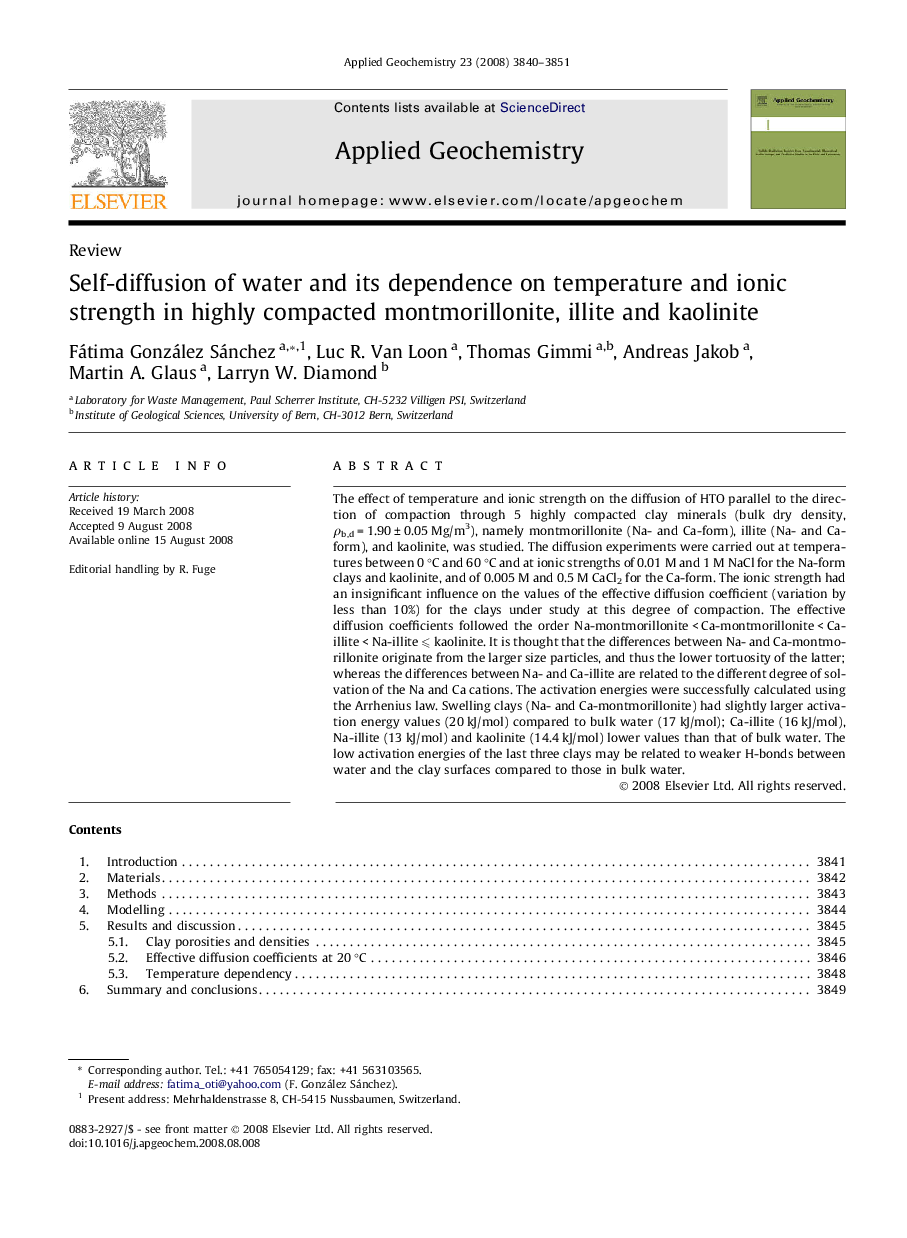| Article ID | Journal | Published Year | Pages | File Type |
|---|---|---|---|---|
| 4437411 | Applied Geochemistry | 2008 | 12 Pages |
The effect of temperature and ionic strength on the diffusion of HTO parallel to the direction of compaction through 5 highly compacted clay minerals (bulk dry density, ρb,d = 1.90 ± 0.05 Mg/m3), namely montmorillonite (Na- and Ca-form), illite (Na- and Ca-form), and kaolinite, was studied. The diffusion experiments were carried out at temperatures between 0 °C and 60 °C and at ionic strengths of 0.01 M and 1 M NaCl for the Na-form clays and kaolinite, and of 0.005 M and 0.5 M CaCl2 for the Ca-form. The ionic strength had an insignificant influence on the values of the effective diffusion coefficient (variation by less than 10%) for the clays under study at this degree of compaction. The effective diffusion coefficients followed the order Na-montmorillonite < Ca-montmorillonite < Ca-illite < Na-illite ⩽ kaolinite. It is thought that the differences between Na- and Ca-montmorillonite originate from the larger size particles, and thus the lower tortuosity of the latter; whereas the differences between Na- and Ca-illite are related to the different degree of solvation of the Na and Ca cations. The activation energies were successfully calculated using the Arrhenius law. Swelling clays (Na- and Ca-montmorillonite) had slightly larger activation energy values (20 kJ/mol) compared to bulk water (17 kJ/mol); Ca-illite (16 kJ/mol), Na-illite (13 kJ/mol) and kaolinite (14.4 kJ/mol) lower values than that of bulk water. The low activation energies of the last three clays may be related to weaker H-bonds between water and the clay surfaces compared to those in bulk water.
